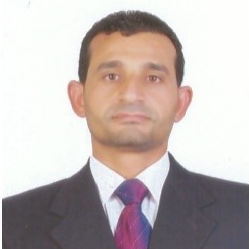Photovoltaic (PV) Systems: Modelling, Measurement and Assessment
A special issue of Processes (ISSN 2227-9717). This special issue belongs to the section "Energy Systems".
Deadline for manuscript submissions: closed (10 January 2024) | Viewed by 5737
Special Issue Editors
Interests: power system stability; dynamics; and control; renewable energy systems; energy storage systems; electric vehicles; smart/micro-grids
Special Issue Information
Dear Colleagues,
The 21st century is faced with the major concern of climate change. It is necessary to control the change in the world’s climate, with the major goal of the world community of returning the climate’s status to its previous era, before it was contaminated by the use of harmful fuels. This is not only an urgent necessity in our time—it has become a duty for all researchers. Recently, the countries of the world have taken a serious step towards achieving this goal. Accordingly, researchers are now in the race to develop new alternatives in the field of green energy. For example, photovoltaic (PV) systems are considered a zero-emission source. Recently, the implementation of PV-based power plants has increased, as solar PV is a perfect energy source without any environmental pollution. This merit encouraged those interested in energy to use solar energy as an alternative to traditional energy sources. While the installation of photovoltaic solar panels is increasing day by day, their efficient use also plays an important role. Because solar PV power generation depends entirely on weather conditions such as temperature and radiation, the massive scaling of energy generation from renewables is essential. Due to the abundance, market potential, technological advancements, and, importantly, low cost, solar photovoltaics (PVs) are driving the growth of renewable energy sources and will be the main source leading this transformation towards sustainable and climate-resilient energy generation.
This Special Issue, Photovoltaic Systems: Modelling, Control, Measurement and Applications, seeks high-quality works and will consider manuscripts that provide concepts or methodologies that can be utilized for improving the performance of PV systems. We are collecting the advancements from novel, original research works as well as reviews.
The scope of interests includes, but it is not limited to, the following topics:
- PV systems characterization and modelling;
- Advanced control algorithms and optimization techniques;
- Energy-storage materials and devices (hydrogen production and storage, supercapacitors, lithium-ion batteries, sodium/potassium-ion batteries, lithium–sulfur batteries, metal–air batteries, fuel cells, etc.);
- Energy management strategies;
- Application of PV systems;
- Energy efficiency;
- PV/thermal systems;
- Concentrating PV/thermal systems;
- PV/thermoelectric generator systems;
- Modelling PV/thermal systems;
- Hybrid renewable systems.
Dr. Gaber Magdy
Dr. Mohamed R. Gomaa
Guest Editors
Manuscript Submission Information
Manuscripts should be submitted online at www.mdpi.com by registering and logging in to this website. Once you are registered, click here to go to the submission form. Manuscripts can be submitted until the deadline. All submissions that pass pre-check are peer-reviewed. Accepted papers will be published continuously in the journal (as soon as accepted) and will be listed together on the special issue website. Research articles, review articles as well as short communications are invited. For planned papers, a title and short abstract (about 100 words) can be sent to the Editorial Office for announcement on this website.
Submitted manuscripts should not have been published previously, nor be under consideration for publication elsewhere (except conference proceedings papers). All manuscripts are thoroughly refereed through a single-blind peer-review process. A guide for authors and other relevant information for submission of manuscripts is available on the Instructions for Authors page. Processes is an international peer-reviewed open access monthly journal published by MDPI.
Please visit the Instructions for Authors page before submitting a manuscript. The Article Processing Charge (APC) for publication in this open access journal is 2400 CHF (Swiss Francs). Submitted papers should be well formatted and use good English. Authors may use MDPI's English editing service prior to publication or during author revisions.
Keywords
- renewable energy
- PV systems
- PV/thermal systems
- energy efficiency
- artificial intelligence
- modern optimization
- energy management






